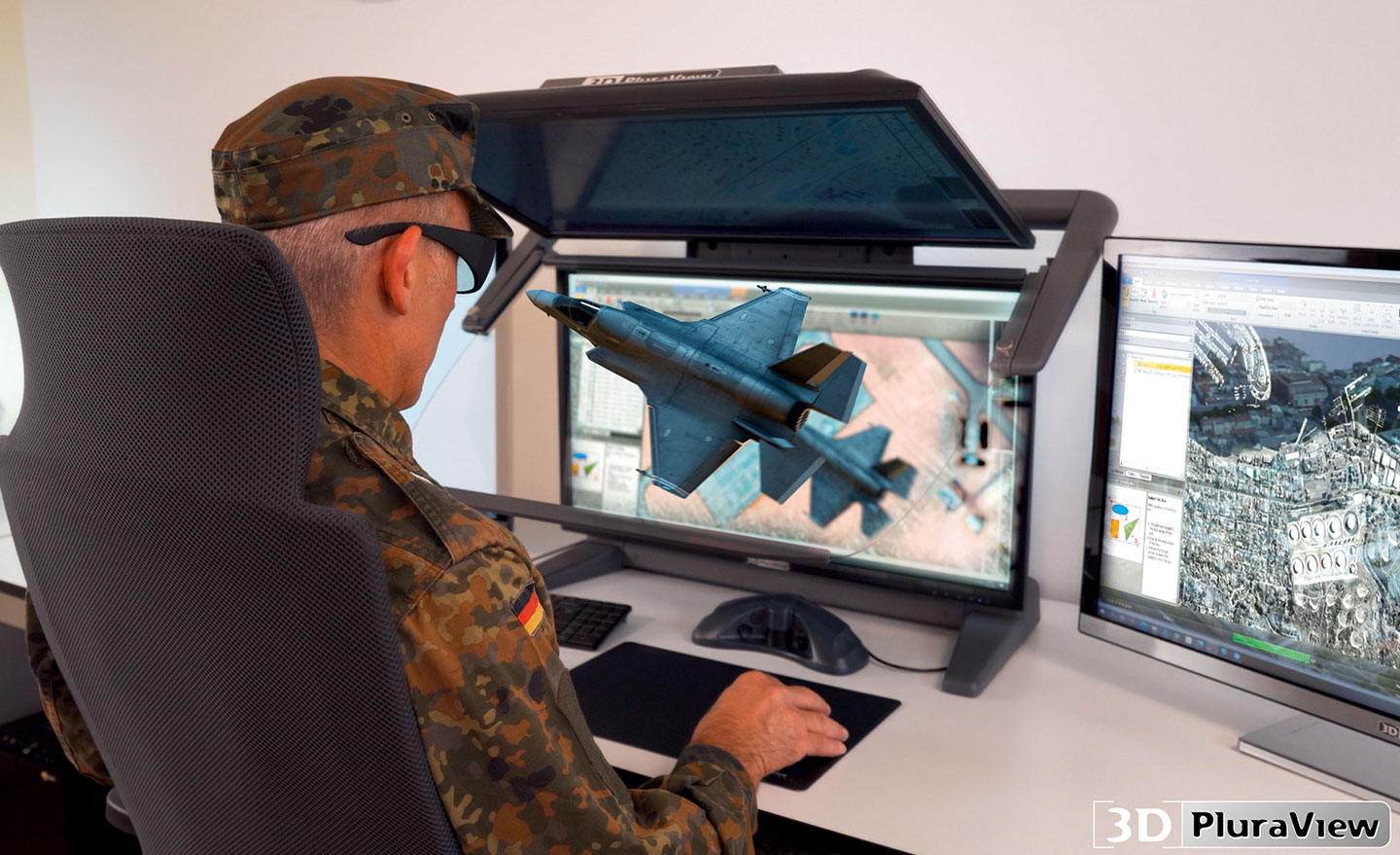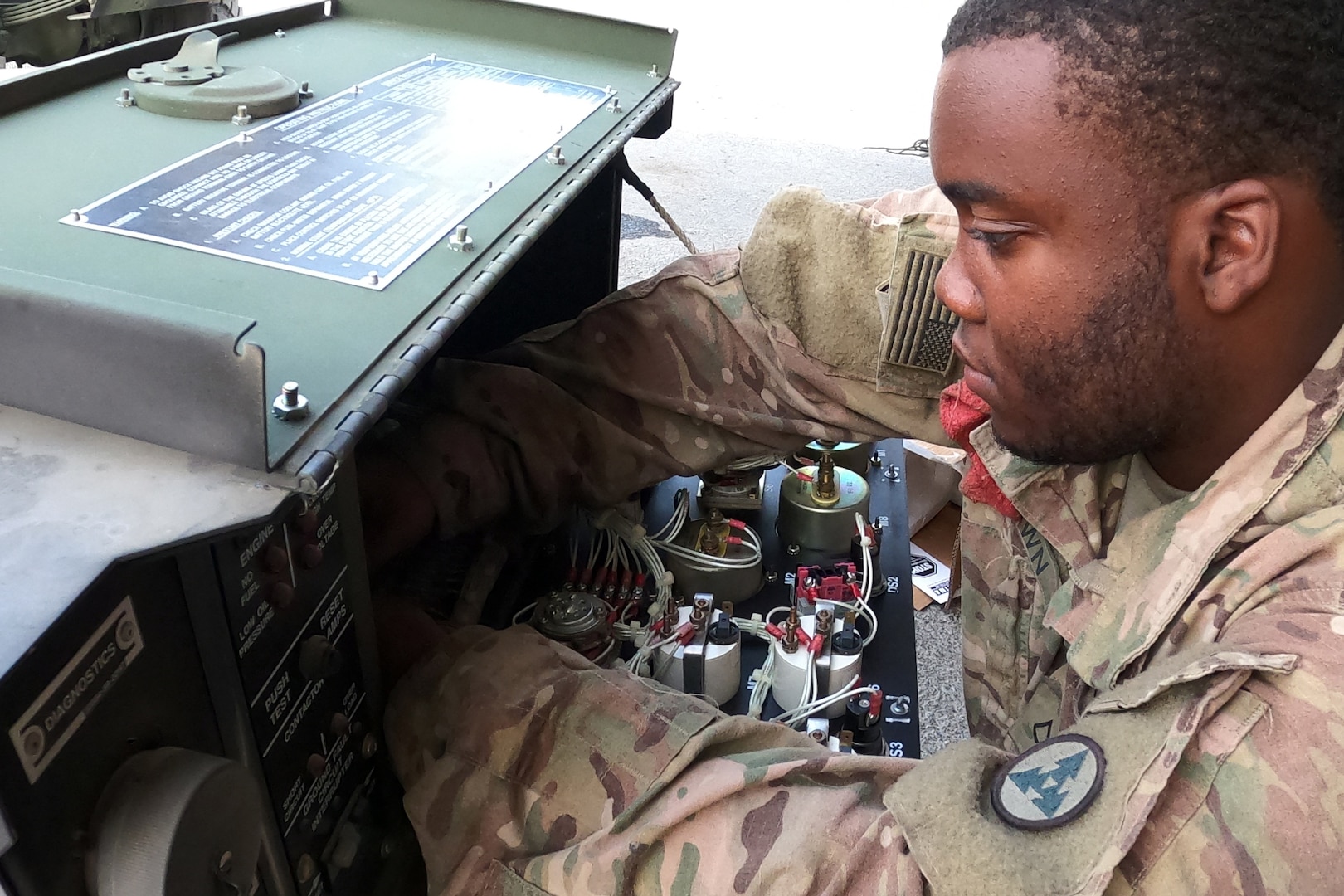Military Information Technology - Trusted partner of security agencies around the world. We develop high-quality systems to ensure the success of operations, from visualization to action.
Delivering the right information to the right person at the right time has become a major challenge for security agencies to combat new threats and gain an edge in the digital war. Therefore, there is a great need to increase information sharing and cooperation within all organizations and partners.
Military Information Technology
It offers easy-to-use yet technologically advanced technologies that seamlessly integrate with employees' devices and processes.
A 20th Century Commander Will Not Survive': Why The Military Needs Ai
The French armed forces will benefit from information that gives them a real advantage. As a stand-alone weapon, enhancements provided by the Scorpion CIS (SICS) enhance battlefield capabilities.
First used by the French Navy's "L16 Design Cell" to launch the Multi-Functional Information Distribution System (MIDS), ANDESIT became their joint network design tool. ANDESIT works, mixing many different platforms (Army, Air Force, Navy) within the work.
The French Defense Acquisition Agency (DGA) has begun reorganizing its operational information systems (OIS) to enable the armed forces to . provide you with integrated information generated by
As part of the Artemis program, Athea, in partnership with Thales, provides a large-scale autonomous platform that enables security and defense decision-makers to make extensive use of data and…
Th Aamdc's New Communication System, Soldiers Are Tested In Capability
Working collaboratively to transform health information systems to support patient-centred healthcare for the UK military.
Industry: Defense Region: Germany Günter Koinegg, Director of Defense Public Sector and Central Europe, emphasizes the nature of the work with ESG: "I am delighted that the Bundeswehr has trusted us...
Security is facing a new world where information control is essential. In this article, he explains how the digital revolution will be the key to solving tomorrow's security problems. The military inspector works in the Cyber Control and Surveillance Center for Homeland Security, Technology and Army Communications.

... do it this way. How we acquire and maintain systems that protect information from the large volumes of data in both military and civilian environments will impact whether we stay ahead of the game in situations that demand speed and agility. A solution to this problem? Merging and repeating.
General Says Artificial Intelligence Will Play Important Role In Network Defense > U.s. Department Of Defense > Defense Department News
What can the Maginot Line teach us about the creation, storage and utilization of information? In the 1930s, France spent around 1% of its GDP (equivalent to £28 billion in the UK today) building thousands of bunkers and blockhouses to thwart future German attacks.
As a policy solution, it was a useful way of dealing with a potential problem. But it failed to integrate with other French military or diplomatic structures. Historians to this day debate whether the Line itself was a smart move; regardless, France surrendered six weeks after the German invasion of Belgium. (For example, the old saying "soldiers spend their time preparing for the last battle" is very useful.)
The current trend is to invest in military systems, national security, and data-driven organizations. We need an advantage against a growing number of enemies in many different areas. However, we often spend time summarizing the systems that are at risk of "Maginot" machining. The "red lines" drawn when defining a mission or capability can be gaps that limit access to information.
The need to create flexible, open information systems has existed since the end of the Cold War. In 1980, attention was almost exclusively on the Communist Party. Intelligence and other factors focus on perceived, often physical, threat. By 2000, only one goal had disappeared. More and more threats were made. In 2001, September 11 forced us to recognize that failure to capture potential information, rather than the obvious, can be a serious policy failure.
Improved U.s. Military Unmanned Aerial System Software
The challenge of connecting disparate information sources to discover multi-layered threats affects organizations of all sizes, military and civilian alike. Effective, cost-effective solutions to protect information in a rapidly changing and evolving environment are both politically and realistically critical.
The answer is to change the way we collect, manage and analyze information to make it more robust and flexible. (No wonder the UK Home Office's main defense document is called that
The Review of Defence, Security, Development and Foreign Policy, which states: “The UK Army will be a threat-focused force and force.
Instead of creating hardwired systems for a single function or area, better connected, more open (software-based) solutions are needed. Cross-domain integration has significant benefits, not only in identifying and responding to emerging threats, but also in generating powerful information on everything from business to healthcare to border security to peer review.
Honduran Air Force, Us Army Partner For First Ever Online Medevac Training Course > U.s. Southern Command > News
The online results of integrated systems for many products are not easy to convey - even in the age of power, security and ubiquity. We need to trust the value of the "integration layer" so that procurement professionals can start defining systems that integrate into the "single view" from the very beginning.
The use of machine learning and artificial intelligence (AI) technologies is already helping to bring systems together to make this common sense possible. “Stovepipes [siloed systems and individual operations] are not growing, so we will work to unify and focus on infrastructure, AI standards, data sharing methods, training and AI best practices,” said Lt. Gen. Michael S. Groen, director of the Pentagon's Joint Center for Artificial Intelligence, in November.
A universal schema for the relationships between data and systems is a good start. But we need two more important things for a future-proof solution.
The first is the resulting uncertainty. Procurement traditionally begins with a detailed description of mission requirements at a given location. If there is no reason for the effects of the Internet, this is understandable. For example, the design of a new tank had to be detailed and then purchased exactly according to the red lines.
Pdf] The Military Applications Of Cloud Computing Technologies
But for a simple traffic management system or web traffic analysis, these solid red lines can be useless. The work may range widely, but the focus should be on the "minimum product" (MVP) of the soon-to-be-shipped product, rather than spending months or years fine-tuning the last detail. As new features evolve, the MVP can be updated to keep up with the experience.
This helps all systems adapt to changes and accelerate development. Technology evolves so quickly that standard single-agent security systems are often outdated by the time they are released.
With an integrated expert who defines the changing needs of different organizations and offers effective solutions for them (not in the way consumers think).

The second thing is that you have to lift it up again and again. In the private sector, the desire for proprietary systems has disappeared, but because of open software and platforms with APIs to support extensions and new applications, it has disappeared. Systems that can change or expand are good when a new opportunity or feature is introduced.
French Military Approves Final Phase Of Big Data And Ai Platform Artemis.ia
The key here is communication and calculation. There must be a firm belief that adding new content does not destroy existing services; that existing schema data will continue to be useful; and that it adheres to standards – be it durability, safety, accuracy or ethics.
We are moving from the industrial age to the multi-platform age – supported at every level by a digital backbone where all sensors, results and options are connected. We have already worked on widespread systems - such as the US DoD's C4ISR (Command, Control, Communications, Computers, Intelligence, Surveillance, and Reconnaissance) objectives, where we integrate surveillance and surveillance as part of a flexible information delivery system.
We know that we need to adapt to information technology. Undoubtedly, these combinations are difficult to predict - especially for those responsible for purchasing. But an open approach solves many problems.
The easiest way to look at this in practice is that old enemies and unpredictable events should only be able to reveal information about them from established systems - we should be bold in designing and repurchasing systems. .
Information Systems Technician (it) Careers
Business power from suppliers is another part of the investment. Good partners understand the importance of placing new information on existing platforms. Coordination between different supplier systems is an important aspect of real business.
A good example is the Command and Control Incident Management Emergency Response Application (C2IMERA) developed by Leidos. It is located at various locations throughout the United States Air Force, allowing units to supplement their deployments with new information. In other cases, real-time Web Map Server (WMS) services from external servers operated by National Oceanic and Atmospheric Administration (NOAA) Geospatial Services.
Military drone range, laser range finder military, military range bags, military range targets, long range military radio, military radio range, military range finder, military long range binoculars, range rover military discount, military range rover, range of military drones, military range bag


0 Comments